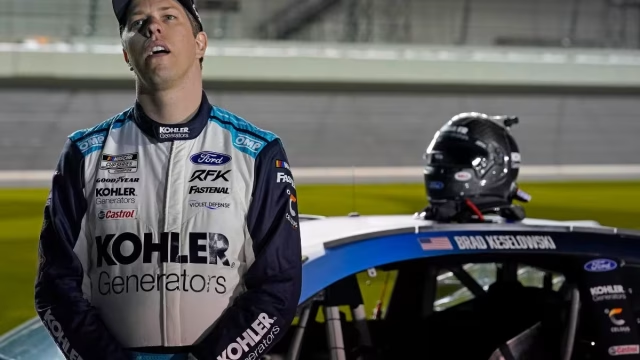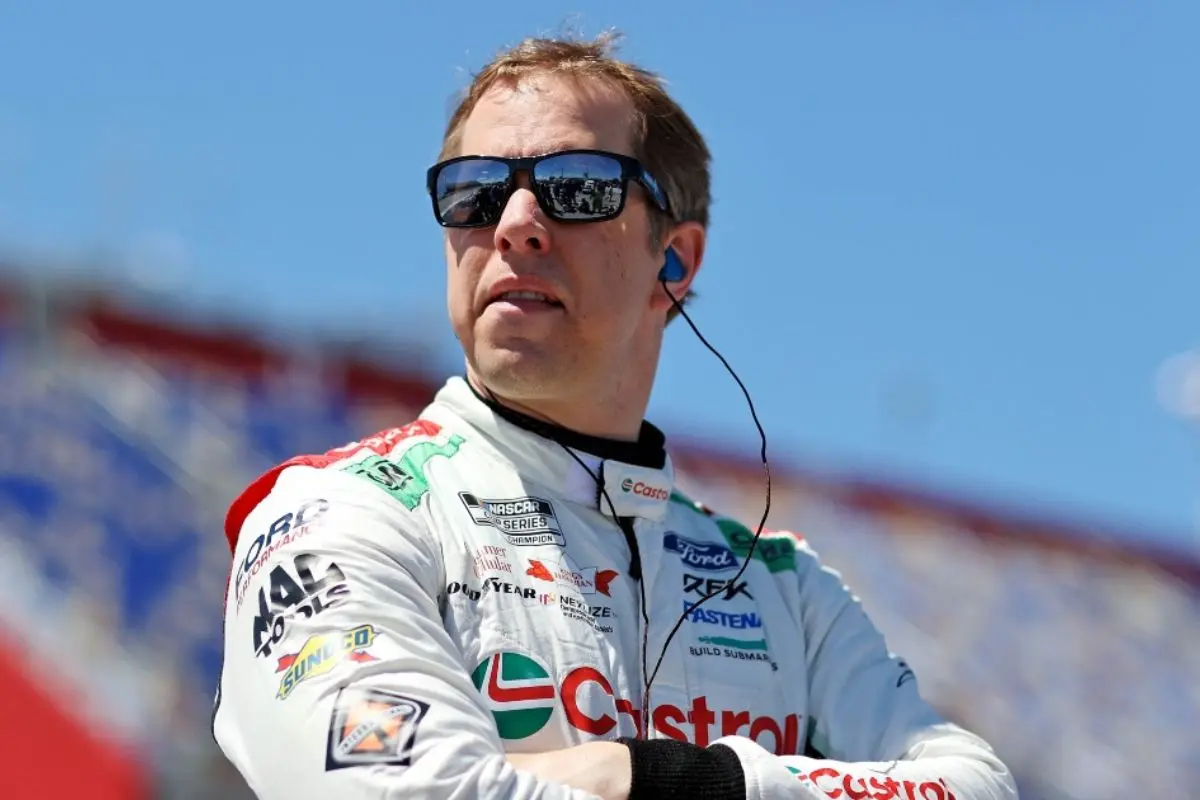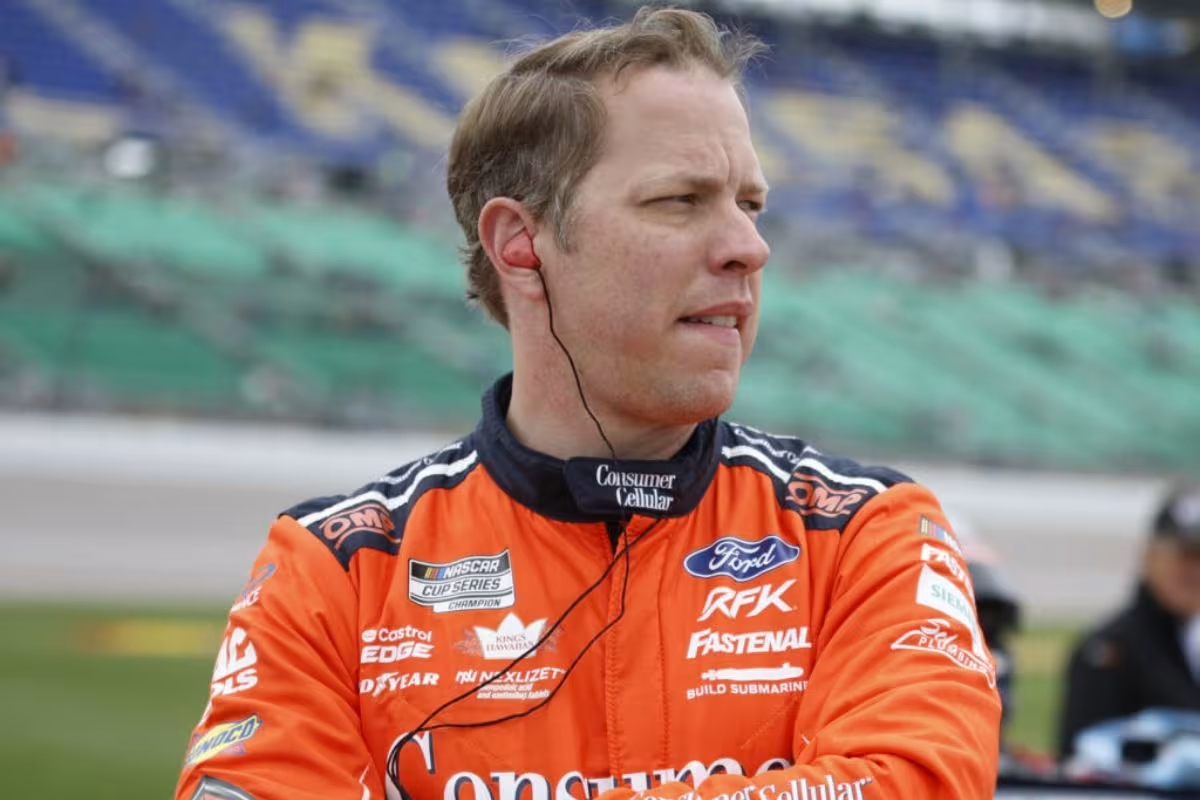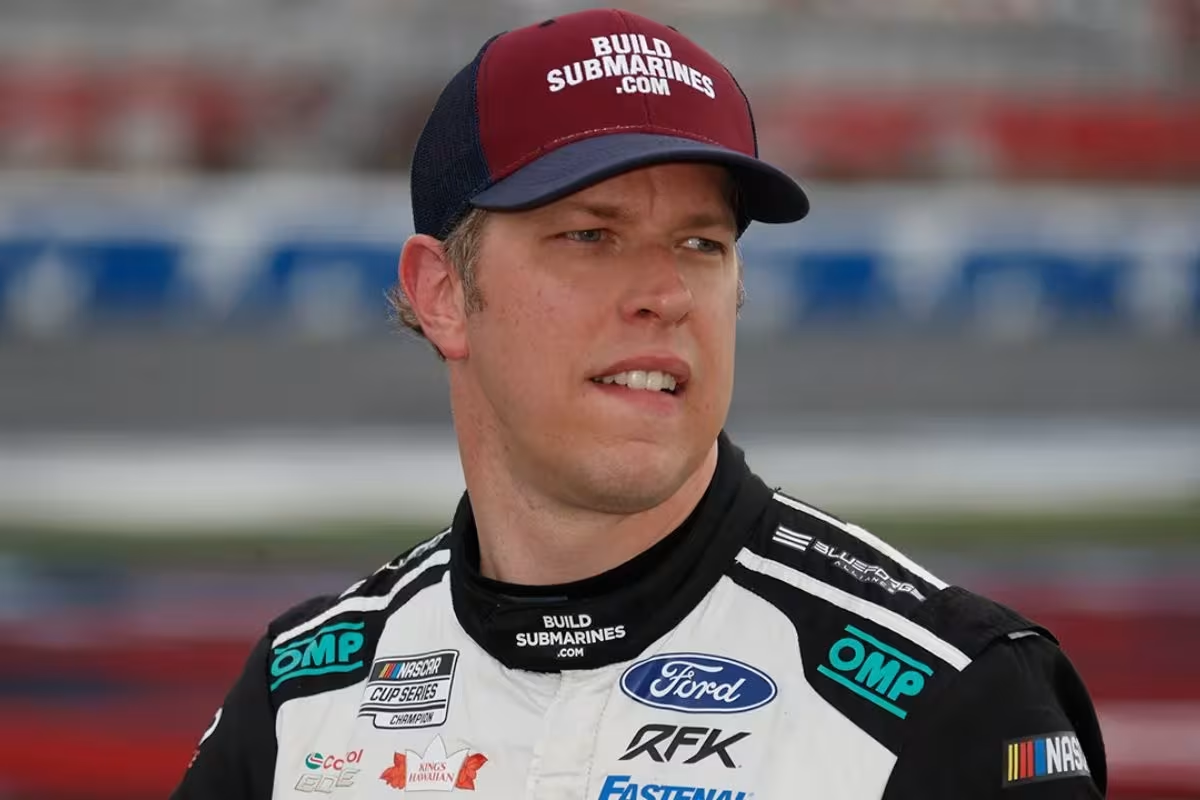Brad Keselowski’s Bristol Nostalgia Sparks Outrage: Brad Keselowski‘s reflections on the Bristol Motor Speedway have stirred considerable debate among NASCAR fans, revealing a rift between those longing for the traditional racing experience and advocates for modern advancements. His call for changes to improve competitiveness is met with mixed reactions. Fans express concern that nostalgia-driven modifications could weaken the essence of recent track alterations meant to enhance grip and excitement. The conversation highlights broader issues within NASCAR regarding vehicle design and racing dynamics, raising questions about the track’s future.
Key Highlights
- Brad Keselowski’s comments on nostalgia for past racing styles highlight the divide in fan opinions regarding Bristol’s track modifications.
- Fans express discontent over potential changes that could revert the track to its historical surface, fearing loss of modern racing advancements.
- The Next-Gen car’s impact on reduced overtaking opportunities has fueled concerns about race excitement and competitiveness at Bristol.
- Mixed reactions to Keselowski’s proposal reflect a struggle between preserving tradition and embracing modern racing dynamics among fans.
- Ongoing debates within the NASCAR community emphasize the need for balancing innovative technology and the unique characteristics of Bristol’s track.
Overview of the Bristol Night Race
The Bristol Night Race, a hallmark event in the NASCAR calendar, is renowned for its unique half-mile oval track and vibrant atmosphere. However, the recent iteration of this iconic race raised considerable concerns regarding its competitiveness. While Kyle Larson dominated the event, leading an impressive 462 laps, the anticipated excitement of short-track racing was largely absent.
Fans who flocked to Bristol for the electric ambiance and potential for nail-biting action were ultimately left underwhelmed by a race characterized by a lack of overtaking and tactical battles. This disappointment highlights a pressing issue within NASCAR: the challenge of ensuring that short-track races remain competitive and engaging.
The traditional allure of Bristol lies in its tight racing and the unpredictability that can arise from its configuration. Yet, as illustrated in this latest race, the potential for dominance by a single driver can stifle the competitive spirit that fans expect.
To address this, NASCAR must investigate regulatory adjustments that foster closer racing and improve opportunities for overtaking. Strategies may include revisiting tire compounds, adjusting car setups, or implementing stages that encourage varied racing strategies.
The comprehensive goal should be to reinvigorate the competitive landscape of short-track racing while maintaining the essence that makes events like the Bristol Night Race a staple in the NASCAR schedule. In doing so, NASCAR can not only meet fan expectations but also secure the future importance of its most cherished events.
Brad Keselowski’s Proposal
Proposing creative solutions, Brad Keselowski has sparked a discussion on how to improve the competitive nature of short-track racing in NASCAR. Taking to X, Keselowski expressed his concerns regarding the current state of the Bristol Motor Speedway, invoking nostalgia for a time when his skill on the track catalyzed notable changes within the sport.
His remarks highlight a pivotal point for NASCAR, as he advocates for a reassessment of the modifications implemented in 2012, which many fans feel have diluted the core of short-track racing.
Catching up on post @ItsBristolBaby discourse on X.
All I can say is- after leading 245 laps and winning the spring 2012 race with the old cup car; this was the result-https://t.co/fRyiRdI7wK
— Brad Keselowski (@keselowski) September 27, 2024
Keselowski’s proposal emphasizes a fundamental question: How can NASCAR reconcile its commitment to evolving with the sport’s rich traditions? The alterations made to Bristol, intended to improve competition, have elicited mixed reactions. While some believe these changes are crucial for progress, a considerable segment of the fan base remains skeptical, arguing that they have not led to the desired outcomes regarding race excitement and driver engagement.
The dialogue he has initiated serves as a reminder that while innovation is necessary, it must not come at the expense of tradition. As fans and stakeholders grapple with these issues, Keselowski’s insights offer a thoughtful perspective on the balance between evolution and heritage in NASCAR.
Historical Context and Changes at Bristol
Historical changes at Bristol Motor Speedway have noticeably altered the landscape of short-track racing in NASCAR. The track’s evolution, especially following Brad Keselowski‘s dominant victory in the 2012 Spring race, has been crucial. Keselowski led for 245 laps, a performance that, despite not qualifying for the playoffs, prompted Speedway Motorsports to initiate a notable diamond-grinding project shortly thereafter.
This endeavor aimed to improve grip and competitiveness, removing approximately 1.5 inches from the track surface, which resulted in a decrease of the banking from a steep 30-degree angle to 28 degrees. This modification transformed the very nature of Bristol, a venue known for its aggressive banking and challenging turns.
While the intention of the diamond-grinding was to foster exciting racing, the results of the August 2012 race indicated a shift in dynamics. Denny Hamlin secured his initial Cup Series win at Bristol that day, illustrating a new competitive landscape with 13 different leaders compared to only six in March.
The changes, while initially successful in promoting diverse race leaders, have since raised questions about the long-term impact on the sport’s authenticity and fan engagement. As evidenced by recent performances, including Kyle Larson’s recent dominance, the implications of Bristol’s modifications continue to provoke debate.
Therefore, the historical context of these changes remains crucial in understanding both the evolution of the track and the ongoing discourse surrounding its future in NASCAR.
Fan Reactions to Keselowski’s Comments
Responses from fans following Brad Keselowski‘s comments about the diamond-grinding changes at Bristol Motor Speedway reveal a palpable discontent within the NASCAR community. Many supporters expressed skepticism regarding the potential reintroduction of a racing surface that, while successful in 2012, may not yield the same results in the present context.
The sport’s evolution over the last decade—marked by shifts in car design, tire technology, and racing strategy—has rendered past modifications less relevant to current competitive dynamics.
“I wonder if SMI could gaslight everyone, or get them to gaslight themselves I guess. Say they are replacing the surface to the exact specs it used to be, and all of a sudden it’s the greatest racing in the world again, even though nothing would probably change.” – fans’ reaction
Fans took to platforms like Reddit to voice their concerns, highlighting a general apprehension about track alterations based on nostalgia rather than empirical evidence. One user articulated the sentiment of many by questioning whether track owners could manipulate perceptions, suggesting a facade of improved racing quality despite unchanged conditions. This commentary emphasizes a broader unease within the fan base regarding the efficacy of surface changes and tire strategies, particularly following a recent Bristol race that failed to meet expectations.
“People are failing to realize it isn’t a dominance issue. It’s a crappy car that can’t pass on short tracks because everyone is going the same speed.”
“You know what? I miss the old Bristol where the only fast line was the bottom and that made things exciting because bumps and runs were necessary. It wouldn’t work with this car though. Shit happens. On to Kansas.” – fans reaction
Moreover, the mixed outcomes of Goodyear’s tire strategies further complicate the narrative. While the Spring race displayed thrilling competition, the September event’s lackluster performance—attributed to experimental improvements like PJ1—has left fans longing for more consistency and authenticity in race quality.
As fans navigate the complexities of nostalgia versus innovation, Keselowski’s remarks have sparked a critical dialogue about the future path of Bristol Motor Speedway and, by extension, the broader NASCAR landscape.
The Current Car’s Impact on Racing Dynamics
Shifting the focus to the current generation of NASCAR vehicles reveals a fundamental impact on racing dynamics, particularly at short tracks like Bristol Motor Speedway. The introduction of the Next-Gen car has sparked notable debate among fans and drivers, primarily due to its effect on overtaking capabilities.
Unlike the pre-2012 era, where more varied car performance allowed for dynamic racing, the current vehicle design emphasizes parity, inadvertently stifling passing opportunities crucial for maintaining competitive excitement.
Many fans argue that the Next-Gen car has transformed Bristol into a more predictable venue, where the uniform speed of competitors reduces the likelihood of thrilling overtakes. As one fan articulated, the car’s inability to facilitate passing has led to a stagnation in racing action, thereby diminishing the allure of short-track events.
“Are people ever going to stop b*tch*ng about this? Is Kyle Larson dominating a race so infuriating to the incels here whose average/washed driver never wins?”
“I’m telling you if we saw Larson lead all 500 laps but the race has 10-15 cautions and was chaotic behind him everyone would’ve been fine with it.” – fans reaction
Furthermore, the perceived lack of cautions and race incidents compounds this issue, as fans yearn for the chaotic, close-quarters racing that once defined Bristol.
Critics assert that even reverting to Bristol’s historical 30-degree banking would not suffice to restore excitement without addressing the underlying car design issues. The sentiment is clear: while nostalgia for past racing styles persists, the focus must shift toward enhancing the current vehicle’s capabilities to foster more dynamic and engaging races.
News in Brief: Brad Keselowski’s Bristol Nostalgia Sparks Outrage
The controversy surrounding Brad Keselowski’s remarks on the Bristol Night Race highlights the ongoing debate regarding the preservation of tradition versus the necessity for evolution in motorsports. As fan reactions reveal a divided sentiment, the historical significance of the track and the impact of contemporary racing dynamics are brought to the forefront. Future discussions must consider these factors to guarantee that the essence of Bristol is maintained while adapting to the changing landscape of auto racing.
ALSO READ: Brad Keselowski’s Brutal Crash at Watkins Glen: NASCAR Safety Under Intense Scrutiny



